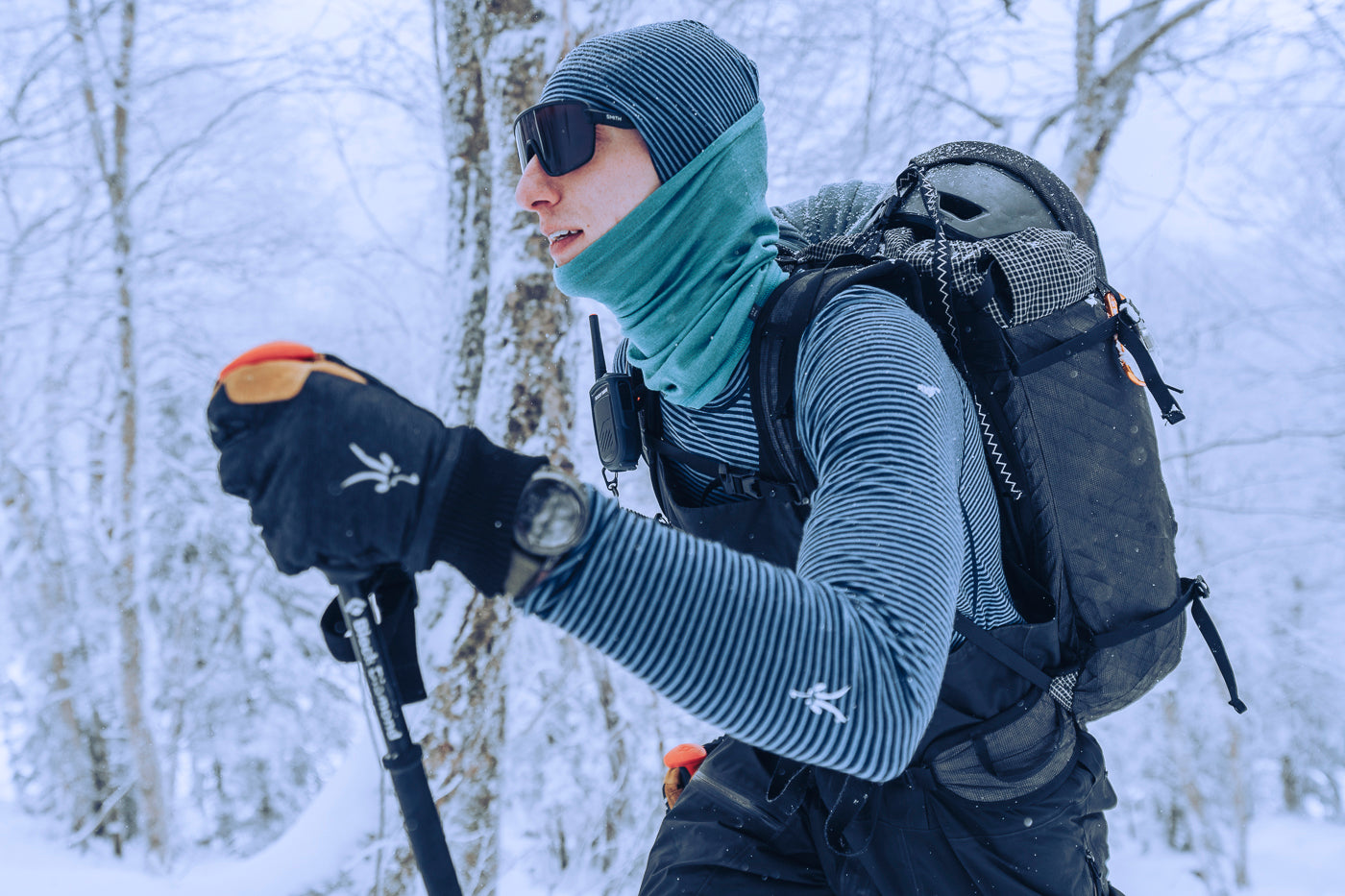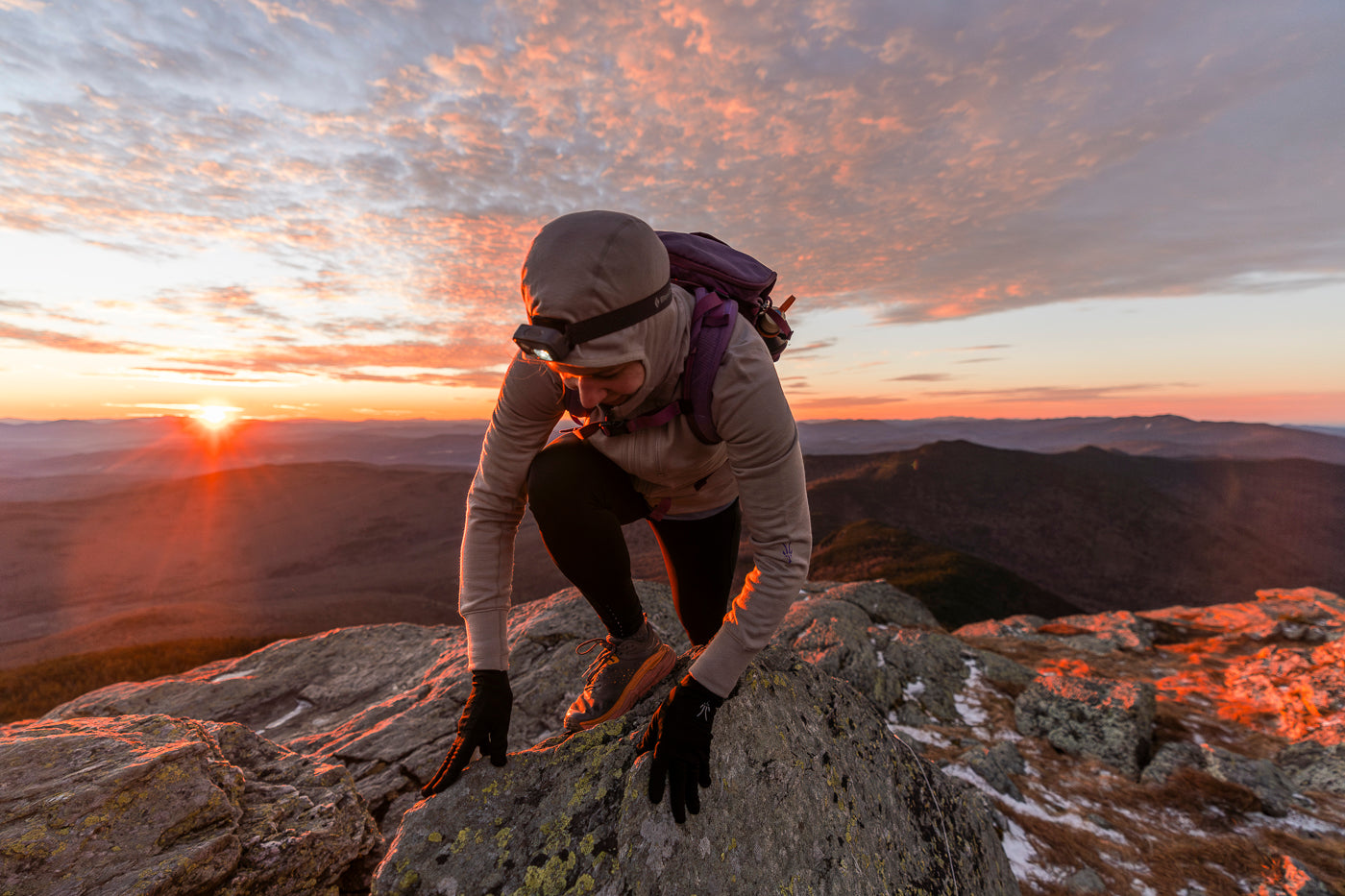Our Layers and Systems
Proper layering involves careful consideration of where you’re going, what you’re doing, and how the weather may change. Our layering systems allow you to mix and match to find the right climate for your comfort. Not sure where to start? Here are the basics.
How to Layer Merino Wool
Much of layering is pretty intuitive, and in time you’ll learn exactly what works best for you, your body, and your outdoor pursuits. Merino layers work well as a team, reinforcing one another’s properties.
Material Weight
All of our products have a fabric weight listed on their page.
GSM stands for grams per square meter, and is a standard measurement for fabric weight.

Why Wool is the Ultimate Performance Fiber
next-to-skin comfort
Merino wool is particularly well-suited to this challenge, as its fibers are ultra-thin and super-soft, so it hugs your body like a second skin and feels comfortable and smooth, unlike your Grandpa’s scratchy wool sweaters.
moisture-wicking
You may have heard the old adage that “cotton kills in the wilderness.” It’s not an exaggeration. Cotton holds onto your sweat, which can give you a chill—or, worse, hypothermia—if you get caught in the cold without sufficient layers to keep you warm. That’s why a lot of technical outdoor apparel is made from wool, which wicks moisture from your body and pulls it away from your skin so it can evaporate.
Thermoregulating
Wool also regulates your body temperature almost as if you were the sheep it originally belonged to. In warm weather, it helps keep you breezy and cool. And in cold weather, it holds onto your body heat, even when it’s wet. If you get stuck in the rain or if you’re unlucky enough to plunge a foot into a frigid river, your wool baselayers and socks will still trap your body heat and prevent you from getting too cold.
WHEN YOU HIT THE TRAIL, START COLD
When you’re setting off on the trail on a cold morning, the best thing you can do is start cold. If you’re all bundled up and cozy when you hit the trail, you’ll start to sweat immediately once you get moving, which means you’ll have to delayer to manage your temperature. To avoid getting sweaty too soon—which, again, can be a safety risk if you’re in a cold place—start with fewer layers than you think you’ll need.
Always Be Prepared With Extra Layers
Often, if you’re hiking on a mild day, you might not need anything else over your midlayer. But it’s always good to be prepared. Regardless of where you’re going, what you’re doing, and what you expect the weather to be, you should always have spare layers in case you stumble into a freak storm, temperatures drop, or you get lost and have to hike into the night. We recommend carrying an ultralight waterproof jacket or windbreaker that packs down small enough that it’s silly to leave it behind.
New to This? Don’t Sweat It
If you’re new to hiking and camping and building a layering system from scratch, it’s OK to take it slow. There’s no one exact right way to layer, and that’s kind of the point—you want a set of pieces you can mix and match to the exact circumstances you’re heading out to. So go ahead and experiment. That’s at least a good excuse to get out and adventure more, right?










